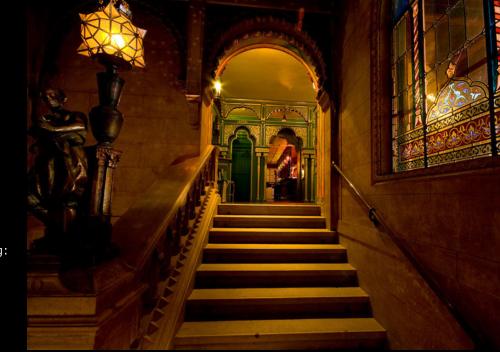Aufguss!

This word, which refers to dousing hot stones with scented water in saunas, can still be heard resounding throughout the saunas, bathing halls and public showers in many a place in Vienna. The term “wellness” is an integral part of today’s parlance, whether it’s used in conjunction with eating, sales offers from furniture suppliers, hoteliers, doctors or any occupation dedicated to health.
Wellness is featured and promoted everywhere, and accepted too. Where the term originates is something that linguists can surely explain with precision. My research led me to the Oxford dictionary, where this term is defined as “good health” and harkens back to the year 1654. In modern usage, the term came from American English in the 1950s and 1960s. The Duden German dictionary paraphrases the term with “… goal-oriented well-being achieved via (light) bodily activity.”
In Vienna, thermal springs have played an ever more important role ever since the Romans settled the region—there is an archaeological discovery of a thermal spring at Hoher Markt in downtown Vienna that can be traced back to the first century A.D., for instance. In the mid-19th century, the so-called “Tröpferlbäder” (lit. “drip baths”) boomed. Through industrialization, the increasing rate of population growth and its concomitant hygienic conditions, the city increasingly began constructing public baths. These baths quickly got their striking name due to the fact that the rush of visitors caused shortages in the water supply and only a small amount of water flowed from the shower—it merely dripped.
In 1842, one of the first large public swimming baths was opened in Vienna’s Second District. The “Dianabad” (Diana Bath), with its 104 cabins, could receive many visitors.
Today, there continue to be numerous municipal and privately managed baths. They have been modernized and reconstructed in recent years in accordance with the current trend.
For us gays, it is considered the epitome of a men’s sauna that has an impressive history that reaches back over centuries—the Kaiserbründl (formerly called the Centralbad). Its roots extend back to Roman times. The first “Padstubn” (bathing room) came about during the Middle Ages from the unusually deep and fertile domestic wells. Three imperial majesties (“Kaiser” or emperors) visited this establishment between 1873 and 1878. It has borne this name ever since. Nowadays, it serves not only recreation, it also makes for an ideal setting for parties and celebrations. It is also a popular location for many shooting many films.
Since the beginning of the 21st century at the latest, so-called “day spas” have catered to those of us who are stressed out. They are oases of well-being for our body and soul. Visiting such a swimming bath after dancing the night away is definitely to be recommended!











